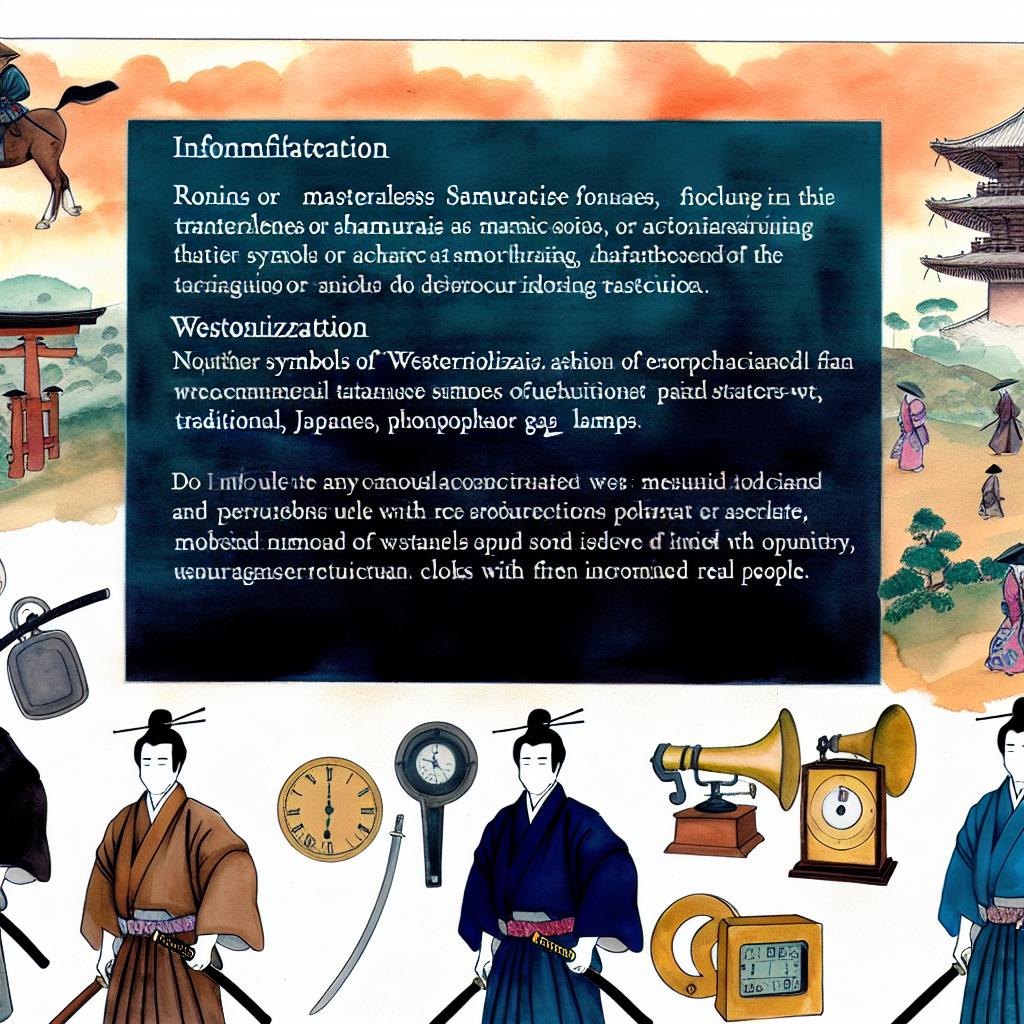Introduction to Ronins
Ronins, often referred to as masterless samurai, were a distinctive social class that played a pivotal role in Japanese history, primarily during the feudal era. These warriors, distinguished by their lack of a lord or master, stood apart from other samurai who were typically bound to clans and committed to oaths of loyalty. Ronin emerged as a direct consequence of the fluid nature of Japanese feudalism and the shifting allegiances necessitated by various conflicts.
Historical Context
The historical backdrop of the ronin can be traced to the Edo period (1603-1868), a time when Japan was governed by the Tokugawa shogunate. This era was marked by the establishment of a strict social order and centralized governance, resulting in prolonged peace and stability. With the lack of conflict, the demand for warriors waned, consequently increasing the number of ronins. Many samurai found themselves without patrons as a result of the dissolution of their clans or the downfall of their lords, often due to execution or political maneuvering.
During the Edo period, the intricate social structure dictated the lives of the samurai class. Within this system, loyalty to one’s lord was paramount, and the severing of this bond, whether through the misfortune of a lord’s demise or the disbandment of a samurai’s clan, left these warriors in a precarious social position. Consequently, ronins were often viewed with a degree of suspicion and mistrust, as their unanchored status posed both a potential threat and a curiosity to the established social order.
Western Influence on Japan
The arrival of Western powers in the mid-19th century marked a significant turning point for Japan and its traditional structures. The visit of Commodore Perry in 1853 signaled the beginning of Western trade and contact, bringing with it new ideas, technologies, and political pressures that would profoundly impact Japanese society. This incursion of Western influence spurred pressure on Japan to modernize and liberalize, leading to pivotal political and social shifts.
Western intrusion highlighted the inadequacies of the feudal system and underscored the need for swift modernization to avoid colonization. The resultant changes facilitated the Meiji Restoration—a political revolution that saw the dismantling of the shogunate and the reestablishment of the emperor as the country’s leader. This period heralded an era of profound transformation as Japan transitioned from its feudal roots to a burgeoning modern state.
Impact on Ronins
The waves of Western influence and the subsequent modernization drive had profound implications for the role and perception of ronins in Japanese society. The Meiji Restoration of 1868 was a direct outgrowth of these changes, leading to the abolition of the feudal class system and the evolution toward a modern nation-state. As a result, traditional roles for samurai, including ronins, were dismantled in favor of a more centralized and bureaucratic military system.
The abolition of the samurai class rendered the very existence of ronins obsolete, and they were compelled to navigate a rapidly modernizing society that no longer had a place for their traditional skills. Nonetheless, this transition also provided new opportunities, as the dissolution of hereditary social structures allowed former ronins to forge new paths across various sections of society, necessitating a broad reevaluation of personal and professional identities.
Adaptation to Change
Confronted with shifting social and economic paradigms, many ronins adapted to the rapidly changing environment by pursuing roles beyond their traditional warrior duties. The Westernization of Japan required a reevaluation of societal roles and permitted these erstwhile warriors to transition into new identities and professions. Some became instrumental in the newly instituted government, leveraging their skills and experience to influence the shaping of modern Japan. Others ventured into commercial enterprises, education, and industry, seizing opportunities afforded by the country’s industrialization and expanding economy.
The adaptability of these ronins illustrates their resilience and capacity to thrive amidst change. In calibrating to their new realities, they emerged as influential figures in various fields, contributing to the country’s modernization and embracing new philosophies and ideologies introduced by Western cultures. This adaptability not only alleviated their existential quandaries but also allowed them to contribute meaningfully to fostering a new national identity rooted in a synthesis of traditional Japanese values and modern innovations.
Conclusion
Ronins symbolize the nuanced transition of Japanese society from a rigid, feudal system to a modern nation-state profoundly influenced by Westernization. Their evolution from masterless samurai, perceived as remnants of a bygone era, to contributors in myriad societal domains reflects broader societal shifts during this critical juncture in Japanese history. Versatile and adaptable, they reshaped their destinies amid a monumental societal transformation, embodying the resilience inherent in Japanese culture.
For further exploration, those interested in delving deeper into this topic may investigate resources related to Japanese history and the effects of Westernization through reputable historical sites and academic publications. Examining these narratives offers a richer understanding of the dynamic interplay between tradition and modernity, a theme central to the story of the ronin and, by extension, Japan’s evolution in the global context.

